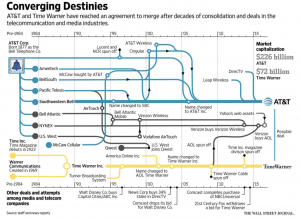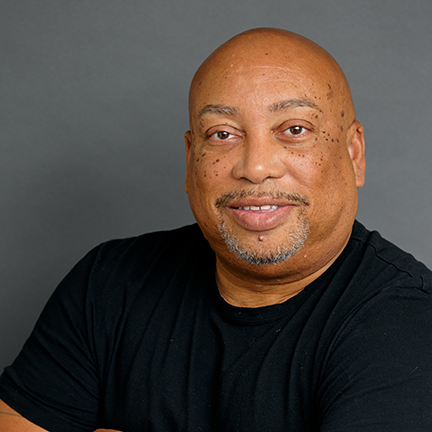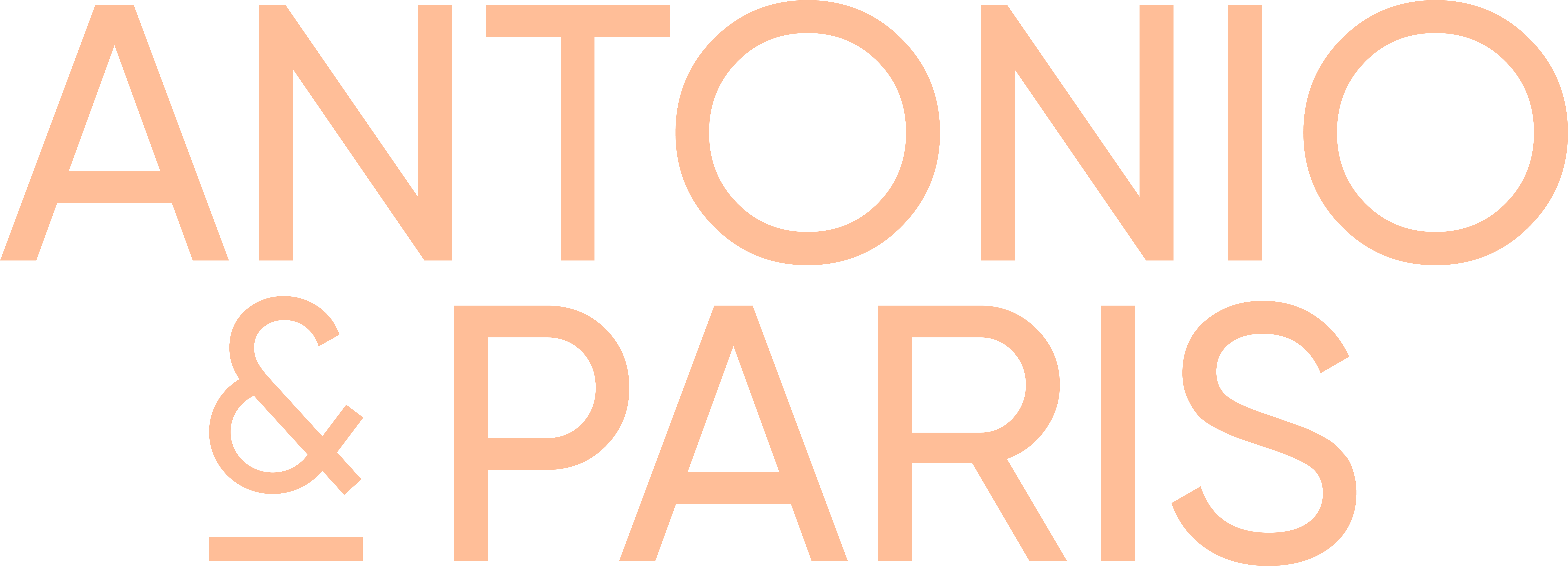Keeping Brand Equity While Undergoing Change
BY: ANTONIO BUCHANAN | MARCH 1, 2022 – 5 MIN READ

Keeping Brand Equity While Undergoing Change
BY: ANTONIO BUCHANAN | MARCH 1, 2022 – 5 MIN READ

Key Takeaways (5-minute read)
- Brand equity is a priceless asset that cannot be created without steady brand cultivation and a strong brand foundation.
- Consumer loyalty and the heart of your brand will build equity when tended to consistently.
- Merging brands and acquiring subsidiaries can be tricky, but brand equity can and should be maintained throughout the process.
- AT&T’s many acquisitions over the past two decades make great examples.
Change is hard. We get it. Especially for established brands that have built equity since their inception, embracing major change or brand evolution can feel like the biggest challenge of all. But there are ways to keep brand equity while undergoing change. Maintaining consumer recognition is daunting for a brand that is expanding into new markets or acquiring subsidiaries; but if done right, a brand can grow, adapt, and thrive even during a big transition.
Challenge: Maintaining Consumer Loyalty
If you’re worried about keeping your consumers while changing up your brand, remind yourself why they were loyal in the first place. Great, now keep doing that! Your company is known for its stellar customer service? That’s part of brand equity, which goes beyond just your look and feel or the products you make. Your brand’s equity lies in the details that people remember. It’s about that heartfelt ad campaign that had consumers in tears over the holidays. It’s about the five-star review from a customer whose misplaced package was promptly replaced or refunded by an associate on your digital team.
When making a big change, it’s important to remember that the things your consumers love about your brand are the things you need to maintain even through this evolution.
Challenge: Brand Recognition
Maybe you have the heart and soul of your brand intact but you’re lacking recognition in the new iteration. If you’re changing your name from Brand A to Brand B to better describe your brand to the public, the consumers who already know you might be confused, or even upset. (Case and point: Meta Platforms.)
To maintain that recognition—an invaluable part of brand equity—consider making a transition slowly by keeping elements of your branding, logo, or name and updating other parts. An easement between old and new can help consumers see what’s happening, understand the new direction you’re taking, and accept the change when they realize you are still the same company, service, or product they know and love.
Another brand strategy for maintaining recognition during a branding change is dynamic storytelling. If you’re going all-out with your evolution, then you have to tell people and explain why. Be bold as you announce your plan to the world. Invite your existing customers on a journey alongside you as you embrace this change for the better. Make them excited to see what’s coming next.
Challenge: Mergers and Acquisitions
 Change could be even harder for a brand that is combining with another company or acquiring a subsidiary. Which brand has more clout? Will your parent company become the front-facing brand that consumers engage with, or will the subsidiary attract more loyalty and recognition? Brand leaders must consider the existing equity in both (or all) partner brands when undergoing a merger.
Change could be even harder for a brand that is combining with another company or acquiring a subsidiary. Which brand has more clout? Will your parent company become the front-facing brand that consumers engage with, or will the subsidiary attract more loyalty and recognition? Brand leaders must consider the existing equity in both (or all) partner brands when undergoing a merger.
These became the questions when mobile solutions giant AT&T merged with Ameritech, ATTC, BellSouth, and Cingular Wireless in the late-1990s and early 2000s. The conglomerate chose to maintain its own brand equity in those cases by merging the subsidiaries with the AT&T brand and dissolving the former brands. The biggest by far was Cingular, whose consumers did experience some confusion and disruption of their brand knowledge during the time—especially as Cingular was fairly new itself.
CBS News chronicled the saga in 2007, citing, “Cingular’s name and orange ‘Jack’ logo, both created only six years ago, will continue to appear alongside the AT&T brand and blue ‘globe’ logo until the company is confident customers won’t be confused by the switch, AT&T announced Friday. But by midyear, it’s ‘likely’ the Cingular name and symbol will be disappearing from ads, promotional materials, trucks, bills, stores and buildings, said Wendy Clark, senior vice president of advertising for San Antonio-based AT&T. The only remnant to survive the transition will be the orange, which will be used for accent and background coloring for AT&T’s cellular products and services. ‘Any time you see us talking about wireless, you’ll see us use orange,’ said Clark.”
Antonio & Paris became part of this monumental branding swap by working with Cingular/AT&T executives through the transition phase to help AT&T leverage Cingular’s biggest consumer market—millennials. Development of a new branded mobile entertainment app was spearheaded by the A&P team and helped AT&T maintain the brand equity that Cingular had with the millennial market while also attracting new customers. Click here to read more about our work on AT&T Karaoke Mashup.
Although the early 2000s saw several well-known brands become AT&T, the company’s 2015 acquisition of DIRECTV and 2018 acquisition of Time Warner and its umbrella of brands (HBO, Warner Bros., Turner) were outside the scope of AT&T’s usual wireless solutions, and it decided to maintain the existing brands. The equity of those entertainment outlets among consumers far outweighed any need to take them under the AT&T wing through branding. HBO, for example, has around 73 million subscribers who would likely riot if the channel and streaming service changed its name—not to mention HBO is eleven years older than AT&T, which is eleven more years to build brand equity and consumer loyalty.
The saga continues this year as AT&T’s WarnerMedia merges with Discovery. Deadline writes, “The merger of AT&T’s WarnerMedia and Discovery has gotten the go-ahead from U.S. regulators, the companies announced Wednesday, clearing a last major hurdle for the $43-billion deal that will create a new media and entertainment giant called Warner Bros. Discovery . . . The combined company will house two streaming services in Discovery+ and HBO Max, a storied film studio and suite of cable networks, sports, entertainment and news assets including the recently embattled CNN.”
Keeping the names of both companies in this version of the entertainment group is a bit of a mouthful, but is packed with brand equity as these two global household names become one. We look forward to seeing the new branding play out, especially as the Warner Bros. Discovery “placeholder” logo was less than impressive and received quite a bit of criticism last year.
Whether your company is preparing for a big refresh or rebrand, acquiring or merging with an existing brand, or undergoing a consumer loyalty campaign, building and maintaining brand equity will be priceless in the long run. The Antonio & Paris team is passionate about helping brand leaders build a strong foundation for new and existing business so that they can cultivate the consumer recognition and equity that will compound for decades to come, so get in touch!
About A&P
A&P, a brand agency, excels in finding innovative ways for clients to provide exceptional experiences to their customers. Their work includes consumer insight, brand innovation, creative development, mobile and technology solutions for global brands such as AT&T, Mini USA, DIRECTV, Newell Rubbermaid, Tenet Healthcare, and Barco Escape. For more information about A&P, visit them on Facebook, Twitter or antonioandparis.com.
Key Takeaways (5-minute read)
- Brand equity is a priceless asset that cannot be created without steady brand cultivation and a strong brand foundation.
- Consumer loyalty and the heart of your brand will build equity when tended to consistently.
- Merging brands and acquiring subsidiaries can be tricky, but brand equity can and should be maintained throughout the process.
- AT&T’s many acquisitions over the past two decades make great examples.
Change is hard. We get it. Especially for established brands that have built equity since their inception, embracing major change or brand evolution can feel like the biggest challenge of all. But there are ways to keep brand equity while undergoing change. Maintaining consumer recognition is daunting for a brand that is expanding into new markets or acquiring subsidiaries; but if done right, a brand can grow, adapt, and thrive even during a big transition.
Challenge: Maintaining Consumer Loyalty
If you’re worried about keeping your consumers while changing up your brand, remind yourself why they were loyal in the first place. Great, now keep doing that! Your company is known for its stellar customer service? That’s part of brand equity, which goes beyond just your look and feel or the products you make. Your brand’s equity lies in the details that people remember. It’s about that heartfelt ad campaign that had consumers in tears over the holidays. It’s about the five-star review from a customer whose misplaced package was promptly replaced or refunded by an associate on your digital team.
When making a big change, it’s important to remember that the things your consumers love about your brand are the things you need to maintain even through this evolution.
Challenge: Brand Recognition
Maybe you have the heart and soul of your brand intact but you’re lacking recognition in the new iteration. If you’re changing your name from Brand A to Brand B to better describe your brand to the public, the consumers who already know you might be confused, or even upset. (Case and point: Meta Platforms.)
To maintain that recognition—an invaluable part of brand equity—consider making a transition slowly by keeping elements of your branding, logo, or name and updating other parts. An easement between old and new can help consumers see what’s happening, understand the new direction you’re taking, and accept the change when they realize you are still the same company, service, or product they know and love.
Another brand strategy for maintaining recognition during a branding change is dynamic storytelling. If you’re going all-out with your evolution, then you have to tell people and explain why. Be bold as you announce your plan to the world. Invite your existing customers on a journey alongside you as you embrace this change for the better. Make them excited to see what’s coming next.
Challenge: Mergers and Acquisitions
Change could be even harder for a brand that is combining with another company or acquiring a subsidiary. Which brand has more clout? Will your parent company become the front-facing brand that consumers engage with, or will the subsidiary attract more loyalty and recognition? Brand leaders must consider the existing equity in both (or all) partner brands when undergoing a merger.
These became the questions when mobile solutions giant AT&T merged with Ameritech, ATTC, BellSouth, and Cingular Wireless in the late-1990s and early 2000s. The conglomerate chose to maintain its own brand equity in those cases by merging the subsidiaries with the AT&T brand and dissolving the former brands. The biggest by far was Cingular, whose consumers did experience some confusion and disruption of their brand knowledge during the time—especially as Cingular was fairly new itself.
CBS News chronicled the saga in 2007, citing, “Cingular’s name and orange ‘Jack’ logo, both created only six years ago, will continue to appear alongside the AT&T brand and blue ‘globe’ logo until the company is confident customers won’t be confused by the switch, AT&T announced Friday. But by midyear, it’s ‘likely’ the Cingular name and symbol will be disappearing from ads, promotional materials, trucks, bills, stores and buildings, said Wendy Clark, senior vice president of advertising for San Antonio-based AT&T. The only remnant to survive the transition will be the orange, which will be used for accent and background coloring for AT&T’s cellular products and services. ‘Any time you see us talking about wireless, you’ll see us use orange,’ said Clark.”
Antonio & Paris became part of this monumental branding swap by working with Cingular/AT&T executives through the transition phase to help AT&T leverage Cingular’s biggest consumer market—millennials. Development of a new branded mobile entertainment app was spearheaded by the A&P team and helped AT&T maintain the brand equity that Cingular had with the millennial market while also attracting new customers. Click here to read more about our work on AT&T Karaoke Mashup.
Although the early 2000s saw several well-known brands become AT&T, the company’s 2015 acquisition of DIRECTV and 2018 acquisition of Time Warner and its umbrella of brands (HBO, Warner Bros., Turner) were outside the scope of AT&T’s usual wireless solutions, and it decided to maintain the existing brands. The equity of those entertainment outlets among consumers far outweighed any need to take them under the AT&T wing through branding. HBO, for example, has around 73 million subscribers who would likely riot if the channel and streaming service changed its name—not to mention HBO is eleven years older than AT&T, which is eleven more years to build brand equity and consumer loyalty.
The saga continues this year as AT&T’s WarnerMedia merges with Discovery. Deadline writes, “The merger of AT&T’s WarnerMedia and Discovery has gotten the go-ahead from U.S. regulators, the companies announced Wednesday, clearing a last major hurdle for the $43-billion deal that will create a new media and entertainment giant called Warner Bros. Discovery . . . The combined company will house two streaming services in Discovery+ and HBO Max, a storied film studio and suite of cable networks, sports, entertainment and news assets including the recently embattled CNN.”
Keeping the names of both companies in this version of the entertainment group is a bit of a mouthful, but is packed with brand equity as these two global household names become one. We look forward to seeing the new branding play out, especially as the Warner Bros. Discovery “placeholder” logo was less than impressive and received quite a bit of criticism last year.
Whether your company is preparing for a big refresh or rebrand, acquiring or merging with an existing brand, or undergoing a consumer loyalty campaign, building and maintaining brand equity will be priceless in the long run. The Antonio & Paris team is passionate about helping brand leaders build a strong foundation for new and existing business so that they can cultivate the consumer recognition and equity that will compound for decades to come, so get in touch!
About A&P
A&P, a brand agency, excels in finding innovative ways for clients to provide exceptional experiences to their customers. Their work includes consumer insight, brand innovation, creative development, mobile and technology solutions for global brands such as AT&T, Mini USA, DIRECTV, Newell Rubbermaid, Tenet Healthcare, and Barco Escape. For more information about A&P, visit them on Facebook, Twitter or antonioandparis.com.

WRITTEN BY
Antonio Buchanan
Short Bio — In 1999 after leading the charge on worldwide accounts, such as American Express, IBM, & Microsoft, at traditional global agencies in large agency networks, Antonio Patric Buchanan set out on his own to create a new agency model with his agency, bang!zoom. Within a couple of years, the agency was purchased by the Canadian holding company, MDC. In 2004, he launched what is now the global brand innovation and design firm Antonio & Paris. He counsels the likes of AT&T, MINI USA, Barco, Paramount Pictures, The Franklin Institute, ThermoFisher and other global brands. Additionally, he is on the Executive Board of Fast Company and First Serve, A United States Tennis Association Non-Profit.

WRITTEN BY
Antonio Buchanan
Short Bio — In 1999 after leading the charge on accounts, such as American Express, IBM, & Microsoft, at traditional global agencies in large agency networks, Antonio Patric Buchanan set out on his own to create a new agency model with his agency, bang!zoom. Within a couple of years, the agency was purchased by the Canadian holding company, MDC. In 2004 he launched Pure Moxie, which was rebranded in 2017 to what is now Antonio & Paris.

